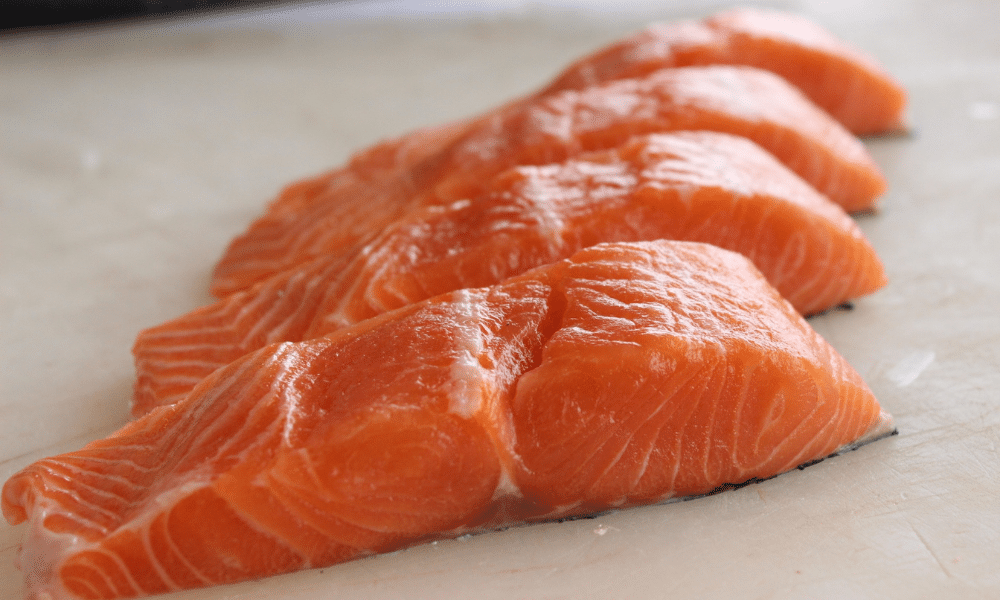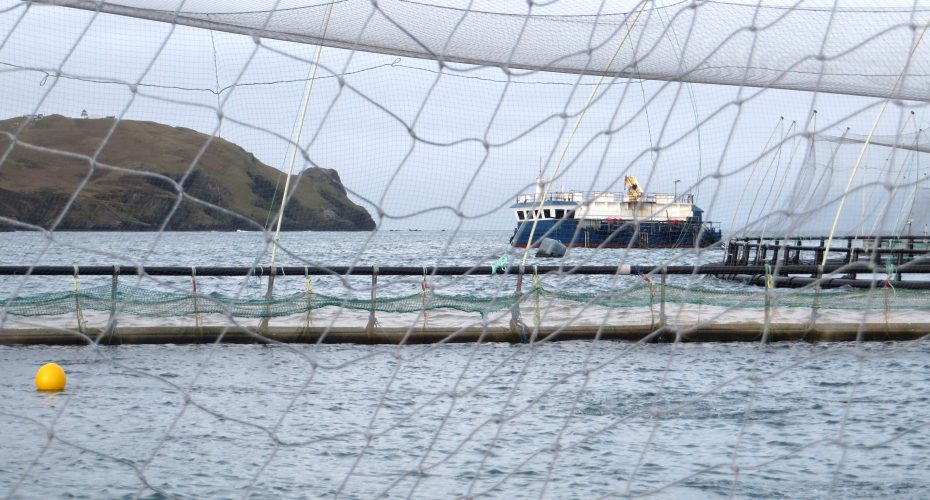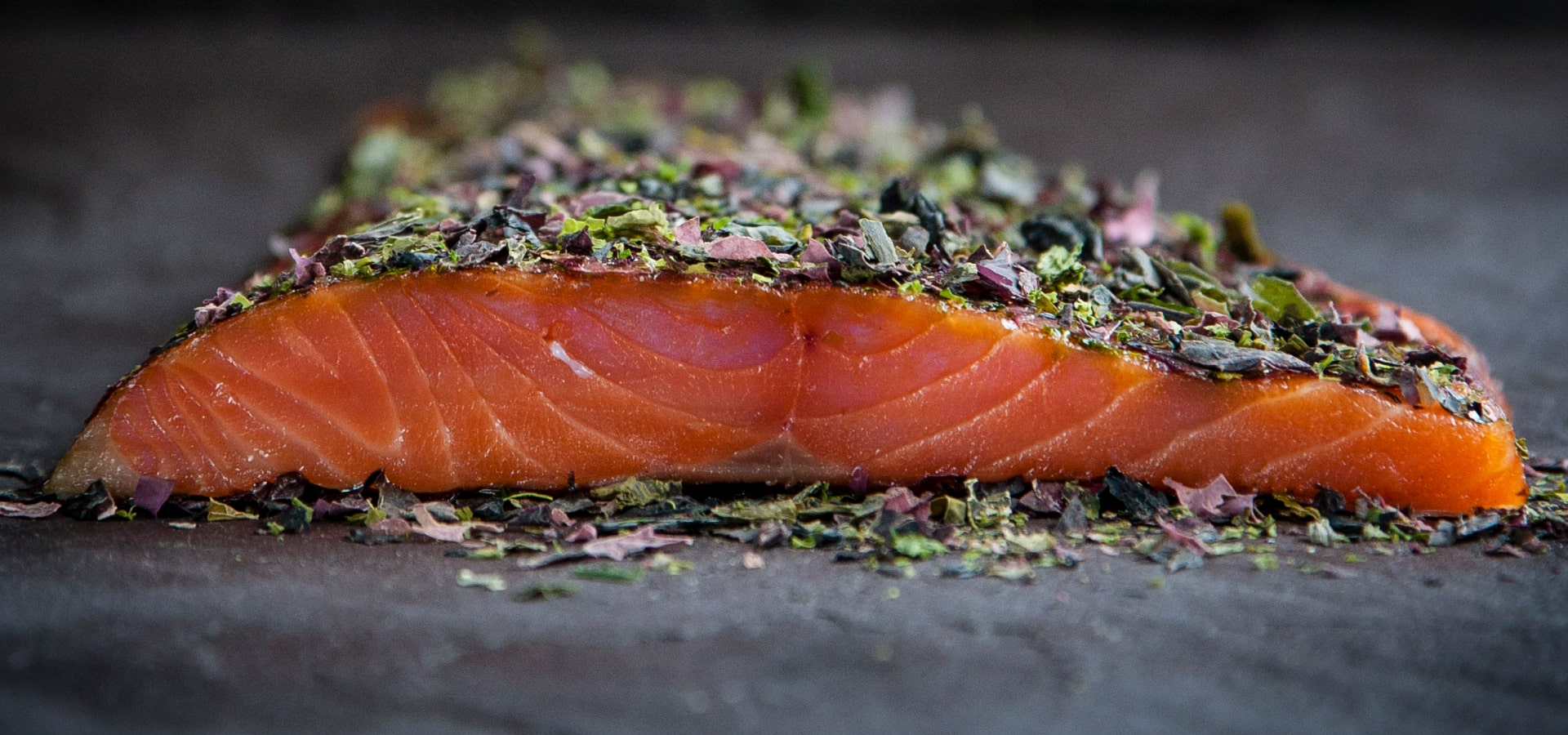Organic salmon has become an increasingly popular food choice for many consumers. But what does “organic” really mean when it comes to salmon? This article goes into great detail about the rules for farming organic salmon, its nutritional value, and more.
An Overview of Organic Salmon
Organic salmon refers to salmon that has been farmed according to organic agricultural standards These standards emphasize sustainable practices and raising salmon in their natural environment as much as possible The “organic” label ensures the salmon were
- Raised without antibiotics, added growth hormones, or other drugs
- Fed an organic, vegetarian diet free of any antibiotics, hormones, or artificial ingredients
- Farmed in open water pens to allow natural behaviors
- Produced in systems with restricted densities to limit stress
- Monitored to limit sea lice, parasites, and diseases naturally
- Raised in waters regularly tested for quality and purity
In other words, organic salmon standards aim to produce salmon in the most natural, chemical-free way possible while still operating a commercially viable fish farm.
The Differences Between Organic vs Regular Farmed Salmon
There are some major differences between conventionally farmed salmon and organically farmed salmon. Here’s a quick look:
-
There are no antibiotics or hormones allowed because organic standards don’t allow the use of antibiotics, steroids, or artificial growth hormones. Regular salmon farms often use antibiotics and hormones.
-
Organic Diet Organically farmed salmon eat an all-organic, vegetarian diet. Regular farmed salmon eat processed fish food with fishmeal and oils.
-
Lower Density Pens: Organic pens contain fewer fish to reduce crowding stress. Regular farms pack more fish in.
-
Monitored for Diseases: Organic farmers use more natural methods of disease prevention. Regular farms use medications and pesticides proactively.
-
Tested for Contaminants: Organic standards require frequent water testing for contaminants. No such testing for regular salmon farms.
How is Organic Salmon Raised and Farmed?
Organic salmon farming follows a strict set of protocols set by various organic certifying agencies. Here is a look at some of the key requirements:
-
Open Pens in Moving Water: Organic salmon spend their lives in netted open-water pens located in areas with constant water flow. This simulates their natural ocean environment.
-
Organic Feed: Organic salmon are fed a vegetarian diet containing organic soy, corn, grains, fish oils and meal from sustainably caught fish. No artificial growth promoters, hormones, or antibiotics can be used.
-
Lower Density: Organic pens contain around 10 kg of fish per cubic meter of water. This is about 90% less density than regular farms. Less crowding reduces stress and promotes natural behaviors.
-
Vaccines Allowed: Organic standards allow the use of vaccines to prevent diseases. But no routine, preventative medications are permitted without a disease present.
-
Parasite Control: Farmers use wrasses, cleaner fish, and other methods to control sea lice naturally. Pesticides are prohibited.
-
Fallowing Periods: Organic sites are periodically left fallow after each production cycle to allow the environment to recover.
-
Sustainable Harvesting: Organic salmon are harvested at 18-22 months using humane stunning techniques. Regular salmon are harvested at 12-14 months.
Overall, these organic protocols aim to produce salmon in a sustainable manner that ensures the health of the fish, consumers, and environment.
What are the Benefits of Eating Organic Salmon?
Beyond the obvious appeal of organic, sustainably raised fish, organic salmon provides some great nutritional benefits:
-
High in Omega-3s: Organic salmon contain high amounts of anti-inflammatory omega-3 fatty acids EPA and DHA.
-
Great Source of Protein: Organic salmon is an excellent source of lean, low-calorie protein. A 3.5 ounce serving contains about 22 grams of filling protein.
-
Low Mercury: Since organic salmon are young when harvested, mercury levels are very low compared to larger, wild salmon.
-
Free of Chemical Residues: With no pesticides, antibiotics, or other additives used, organic salmon don’t contain dangerous chemical residues.
-
Environmentally Friendly: Organic salmon farming has a lower environmental impact compared to intensive conventional practices.
So by choosing organic salmon, you get an incredibly healthy, nutritious fish that’s responsibly raised for sustainability.
Is Organic Salmon Worth the Higher Price?
Organic salmon typically costs $2-$5 more per pound compared to conventional farmed salmon. While this may seem like a high premium, there are some compelling reasons why it’s worth paying more:
-
You avoid the antibiotics, growth hormones, and contaminants found in regular farmed salmon.
-
It’s more nutritious and lower in toxins than conventional salmon.
-
The texture and flavor is often better since the fish grow slower.
-
You support responsible farming practices that are better for the environment.
-
It aligns with ethical values around animal welfare and sustainability.
Considering all the benefits, many people find paying a little more for organic salmon is worthwhile. And as demand grows, prices are likely to become more competitive with conventional salmon over time.
Frequently Asked Questions About Organic Salmon
Can wild salmon be organic?
Wild salmon can’t be certified organic since there’s no control over their natural environment and diet. Only farmed salmon can be organic.
Does organic salmon taste better?
Many people think organic salmon has a superior flavor and texture since the fish grow and mature slower. The high omega-3s also enhance the taste.
Is organic salmon safe to eat raw?
Organic salmon maintained under sanitary regulations is considered safe to eat raw or undercooked. It’s recommended those with weakened immune systems cook fish thoroughly.
Are organic salmon GMO-free?
Yes, certified organic standards prohibit the use of any genetically modified organisms, so organic salmon will always be non-GMO.
Can salmon farms be organic and sustainable?
With strict protocols around feed, pens, density, health management, and environmental impact, salmon farms can potentially be organic and sustainable. But not all are, so look for credible organic certification.
The Bottom Line on Organic Salmon
When you choose organic salmon, you get great tasting, nutritious fish raised in a responsible manner without antibiotics, hormones, or other drugs. Although it costs a little more, organic salmon is worth it for many consumers. The combination of ethical farming practices, lower toxin exposure, superior nutrition, and great flavor makes organic salmon a smart seafood choice.

What is Organic Salmon?
Many trips to organic salmon farms on Clare Island and in the southwest of Ireland have taught us a lot about how to raise salmon in an organic way. We want to share this information with you here.
Getting to go out there and talk to the very skilled crews at the sites was a very helpful first-hand experience.
Our organic salmon comes from the most exposed fish farms in the world, which are on the west coast of Ireland and are tethered to strong currents. Most of our organic salmon comes from places on Clare Island and in the southwest of Ireland, near the Ring of Kerry.
In regular intervals, sites are left fallow like farmers used to do with their fields. For organic aquaculture, this is a standard procedure in-between production cycles.
When Clare Island is not being used, the animals are moved from the hatchery to places like the southwest sites. People can live on the sites for up to two years and three months. After that, they are empty for at least six weeks.
Tides and waves are very strong at all of the sites, and the water quality is 1A, which means it is the best. A build-up of parasites and pollutants is nearly impossible.
The strong currents in the water make the muscle texture firm, and the fat content is very low. These are the most important factors in the success of our organic salmon.
The salmon will have swum about 14,500 miles (23,000 km) by the end of their lives, which is about the same distance that wild salmon would go.
Organically farmed salmon are reared in large and deep cages. In line with the ideas of organic farming, they let the salmon do what they naturally do, which is to group together, and control how close they are to other salmon.
The number of animals per net is greatly reduced. It’s not very dense with salmon in the cages—only 10 kg of salmon live in every cubic meter of water. This means that there is 1% salmon and 99% water! This means that the conditions in which the salmon is farmed are very similar to those in the wild.
Because the organic salmon farms are in such open areas, sea lice that live in the water don’t bother the salmon much. The currents are very strong which brings a constant exchange of sea water. Diseases are less likely to spread in clear water, and medicine is only used to treat health problems when they happen and at the request of qualified vets. No preemptive medication is administered.
It also means that no sediments can gather on the seabed which is good news for the environment. Environmental studies carried out have proved that there has been no effect on the sea bed.
In recent years, cleanerfish have been introduced to the aquaculture in Ireland. Our suppliers of organic salmon are using lumpfish (Cyploterus lumpus) which live in the cages. Little forests of seaweed in the cages allow them to hide and socialise.
When they’re at work, they swim around the salmon and eat the sea lice, which keeps the salmon free of parasites.
The salmon is manually fed every day. The feed consists of pellets made of natural ingredients from sustainable sources, and free from genetically modified organisms. They contain 90% marine-based feed like trimmings and fish oils (those important omega-3 oils!). The rest is made up of vegetable ingredients.
The way the salmon are fed is highly sophisticated. Each site has a barge which serves as an operating centre. From here, pellets are piped into the cages by a machine that turns the feeding pipes that go to the different cages based on the salmon’s feeding needs.
The salmon are always being watched on computer screens inside the barge thanks to the three cameras in each cage.
The salmon’s swimming pattern changes and pellets fall through. This lets you know when they’ve had enough to eat. When that happens, the feeding is stopped immediately, and the salmon in another cage are being fed. This prevents wastage and environmental pollution.
The salmon is raised from egg to grown fish in a traceable way. At 13 months, the salmon goes through natural changes that get them ready for life in saltwater after being used to freshwater up to that point.
When they are ready, they are moved to cages in the sea, where they will stay for another year and seven months.
The temperature of the water has a big effect on the rate of growth. The slower the growth, the cooler the water. The salmon can be at sea for up to two years and three months.
On average, it takes three years to rear the salmon before it reaches you. When they reach the ideal size of 4. 5 to 5. 5 kg, they are transferred by boat to the slaughter station. The salmon is being slaughtered in a quick and humane way as not to cause any stress.

The cages’ nets are made of a very strong material that can stand up to bad weather and big waves. They are safely moored in the shelter of small islands off the west coast of Ireland.
The nets are exchanged every four to five years, but are extensively cleaned every two to four weeks. As the picture shows, nets cover the open tops of the cages so the salmon can’t get out and are safe from animals that might try to eat them.
All the time, cameras and full-time divers watch over the pens to make sure no damage goes unnoticed.
The organic salmon farms are certified organic which means they have undergone a strict, high-standard certification process. The organic salmon we buy in its raw form can be fully tracked and is certified by groups such as the Irish Organic Association (IOA), Naturland (Germany), Qualité France, and Bio Suisse (Switzerland). They are also regularly audited by relevant government bodies like the Department of Marine.
These are the most important reasons for us and most of our picky customers to buy organic salmon:
- Respect for animal welfare
- good for wildlife and the environment
- trusted sources and high standards
- Not added chemicals, pesticides, or genetically modified organisms (GMOs) but healthy food that tastes great
Now that we know all of this, we are sure that organic salmon is the next best thing to wild salmon. It tastes just as good and is better for the environment. So eating organic salmon is a very good alternative to wild salmon.

